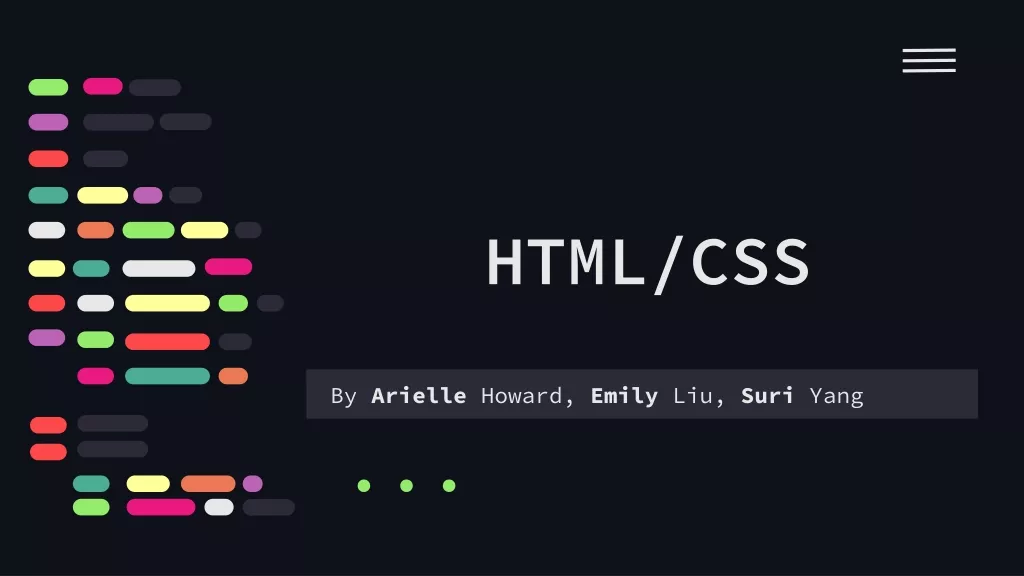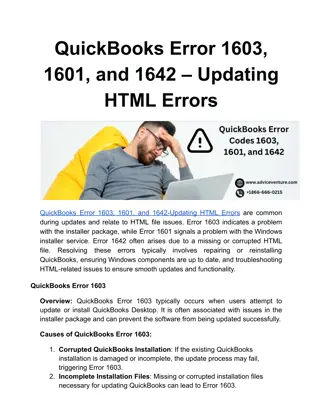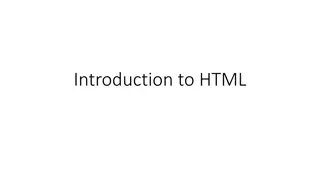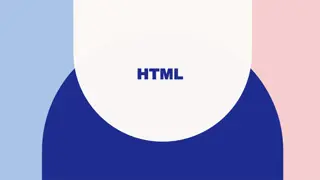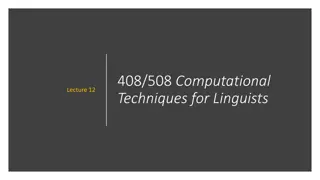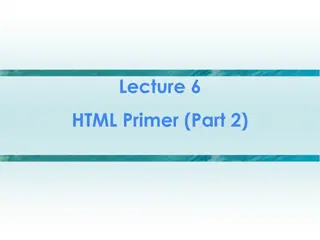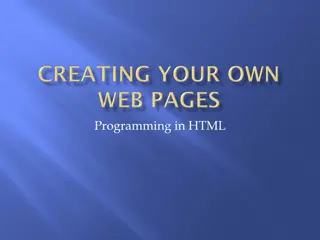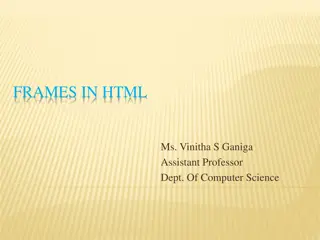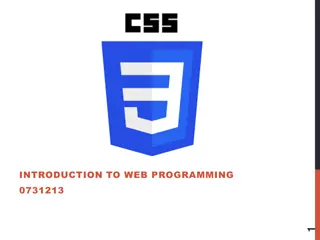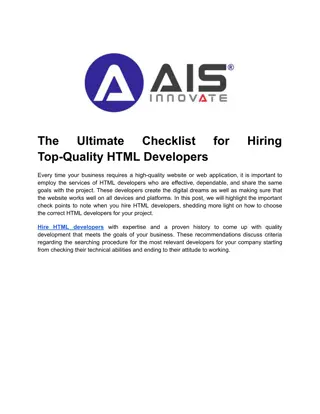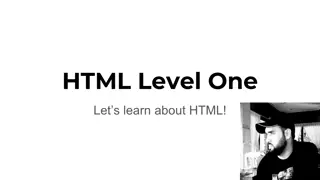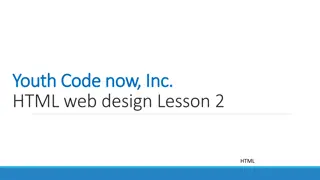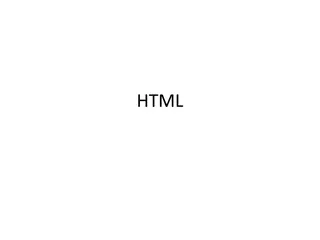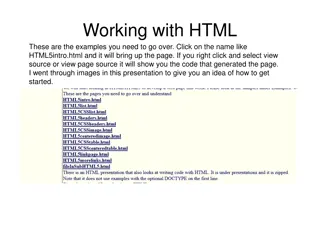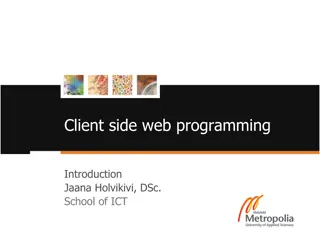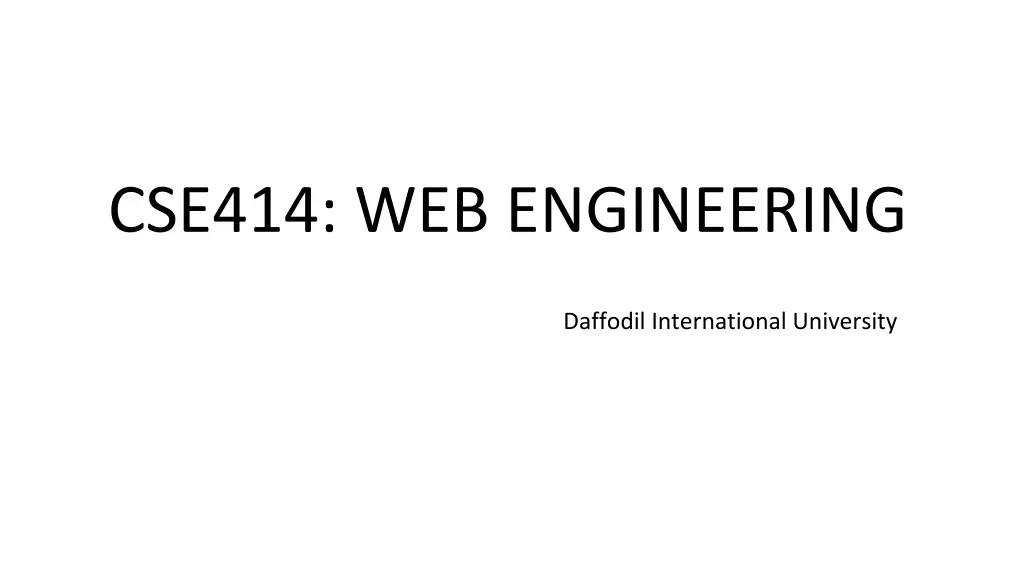
Understanding Web Engineering and HTTP Protocols
Dive into the world of web engineering and HTTP protocols, learn about HTTP history, requests, hypertext and HTML elements, and discover the foundations of web communication and infrastructure. Explore tools, elements, and character sets essential for web development.
Download Presentation

Please find below an Image/Link to download the presentation.
The content on the website is provided AS IS for your information and personal use only. It may not be sold, licensed, or shared on other websites without obtaining consent from the author. If you encounter any issues during the download, it is possible that the publisher has removed the file from their server.
You are allowed to download the files provided on this website for personal or commercial use, subject to the condition that they are used lawfully. All files are the property of their respective owners.
The content on the website is provided AS IS for your information and personal use only. It may not be sold, licensed, or shared on other websites without obtaining consent from the author.
E N D
Presentation Transcript
CSE414: WEB ENGINEERING Daffodil International University
You Will Be Able To Understand the HTTP Understand HTML5 elements Choose the right tools Know about different character set
Contents HTTP Tools to use HTML Elements HTML Characters
WEB World Wide Web [New] An infrastructure that allows to easily develop, deploy, and use distributed systems Distributed systems A system in which components located on networked computers communicate and coordinate their actions by passing messages in order to achieve a common goal The web uses the Hypertext Transfer Protocol to communicate (Communication) protocol A defined system that allows two or more entities to transmit information via any kind of variation of a physical quantity It defines the rules, syntax, semantics and synchronization of communication
HTTP From CSE313 we already know, Web clients (web browsers) and web servers use HTTP (Hypertext Transfer Protocol) to communicate with each other. More generally, HTTP is an application- layer protocol for distributed systems
History of HTTP 1991 HTTP 0.9 1996 HTTP/1.0 1997 HTTP/1.1 1997-2014 Minor improvements and clarifications of HTTP/1.1 are developed 2015 HTTP/2 Major revision of HTTP with focus on efficiency and privacy improvements HTTP/2 allows a server to push resources to client even before they are requested HTTP/2 puts more emphasis on encrypted connections
Hypertext and HTML The HTML specifies the static part/ elements of a web page Hypertext documents contain links to other hypertext documents, creating an associative trail that readers can choose to follow Markup , more general term for tags which provide additional information about document structure, content type, formatting, etc.
HTML is an evolving HTML is an evolving standard (as new technology/tools are added) HTML 1 (Berners-Lee, 1989): very basic, limited integration of multimedia in 1993, Mosaic added many new features (e.g., integrated images) HTML 2.0 (IETF, 1994): tried to standardize these & other features, but late in 1994-96, Netscape & IE added many new, divergent features HTML 3.2 (W3C, 1996): attempted to unify into a single standard but didn't address newer technologies like Java applets & streaming video HTML 4.0 (W3C, 1997): current standard attempted to map out future directions for HTML, not just react to vendors XHTML 1.0 (W3C, 2000): HTML 4.01 modified to conform to XML standards XHTML 1.1 (W3C, 2001): Modularization of XHTML 1.0
In this course You should design your webpages to the XHTML 1.0 Strict standard (or better). I will be enforcing this standard in your assessments (as much as possible). More will be said when I discuss Document Type Declarations (soon).
Web Development Tools Many high-level tools exist for creating Web pages e.g., Microsoft FrontPage, Netscape Composer, Adobe PageMill, Macromedia DreamWeaver, HotDog, also, many applications have "save to HTML" options (e.g., Word) for most users who want to develop basic, static Web pages, these are fine (but they still may produce poorly structured HTML code) Assembly language vs. high-level language analogy So, why are we learning low-level HTML using a basic text editor? may want low-level control may care about size/readability of pages may want to "steal" page components and integrate into existing pages may want dynamic features such as scripts or applets remote editing of web pages may only be possible using a basic text editor
Choosing the right tools? What Not To Use in this course: Any drag and drop website Save as html this generates poor html code No software that can convert your design to code What To Use: Any Text-editors and/or IDEs. ie, Notepad, Notepad++, SublimeText, PHP Storm, VSCode etc. You CAN NOT use CSS frameworks like Bootstrap You can if and only if you get approval for a higher level projects ( you are already a developer!)
Elements and Attributes(1/5) The HTML5 specification defines a set of elements, attributes, and attribute values and their meanings (semantics) (there are more than 100 different elements alone) Authors of HTML documents should not use elements, attributes, or attribute values for purposes other than their intended semantic purpose otherwise documents might not be processed correctly (still, most authors violate this rule)
Elements and Attributes(2/5) HTML5 follows the separation of concerns design principle: a system should be divided into parts with functionality that overlaps as little as possible in HTML5 semantics and presentation are (mostly) separated For the full specification of the most recent version see S. Faulkner, A. Eicholz, T. Leithead, A. Danilo, S. Moon, editors: HTML 5.2. W3C Recommendation, 14 December 2017. https://www.w3.org/TR/html52/ (accessed 09 September 2019)
Elements and Attributes(3/5) Most elements consist of a start tag and a matching end tag, with some content in between The general form of a start tag <tagName attrib1="value1" ... attribN="valueN"> A end tag / closing tag takes the form </tagName> Examples: <title >My first HTML document </title > <a href="http://cgi.csc.liv.ac.uk/">CS Website </a>
Elements and Attributes(4/5) HTML Attributes All HTML elements can have attributes Attributes provide additional information about an element Attributes are always specified in the start tag Attributes usually come in name/value pairs like: name="value" Example <a href="https://www.w3schools.com">This is a link</a>
Elements and Attributes(5/5) Nested HTML Elements HTML elements can be nested (elements can contain elements). All HTML documents consist of nested HTML elements. Suggestion Use Lowercase Attributes Quote Attribute Values
Character Encodings Computers operate on bits (0/1) and sequences of bits To store a text, it needs to be encoded as a sequence of bits To retrieve a text, a sequence of bits needs to be decoded back to a sequence of characters Early examples of such encodings are 7-bit ASCII (American Standard Code for Information Interchange) 8-bit ANSI (American National Standards Institute) 8-bit Windows-1252 8-bit Mac OS Roman However these allow to encode at most 256 characters the languages of the world contain many more characters
Character Encodings UTF-8 is a modern solution to this problem: (Almost?) every known character is mapped to a sequence of 1x8 bits to 4x8 bits Within UTF-8, ANSI characters retain their encoding When two systems exchange texts, then they need to know / agree which encoding they are using A HTTP header uses ASCII A HTTP message body can use an arbitrary encoding Char ASCII ANSI UTF-8 Mac OS Roman a a a 01100001 11100010 11100100 01100001 11100010 11100100 11001001:10100011 01100001 10001001 10001010 1100001
HTML Characters The HTML5 specification defines a large number of named characters with the general format &name; allows access to non-ASCII and reserved characters Named char, < > rendered as < and > respectively Arbitrary characters can also be accessed using &#dec; and &#xhex; where dec and hex are decimal and hexadecimal encodings for a character < rendered as < & as &
Exercise Why do we need protocols? Write two applications of HTTP. READINGS M Schafer: Ch. 1, 2, 3, 4 HTTP Kurose: Ch 2 [Page 98-114] https://www.w3schools.com/html
Acknowledgement This module is designed and created with the help from following sources- https://cgi.csc.liv.ac.uk/~ullrich/COMP519/ http://www.csc.liv.ac.uk/~martin/teaching/comp519/

